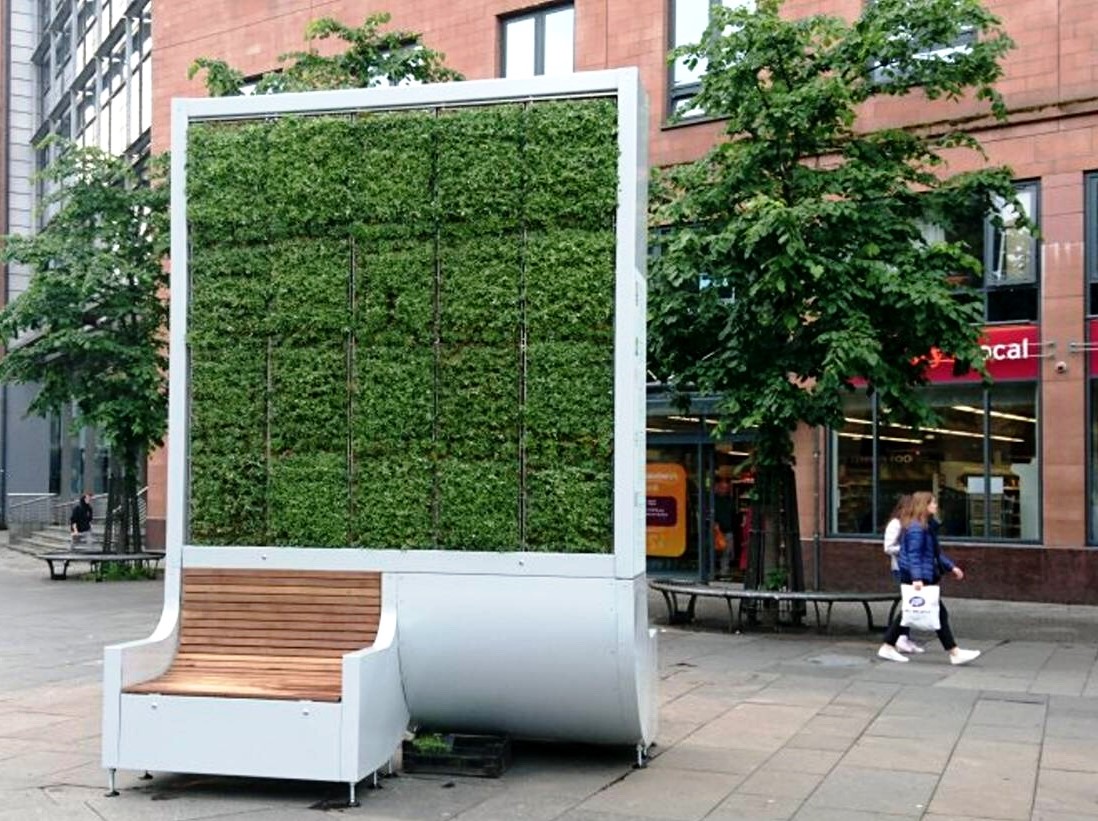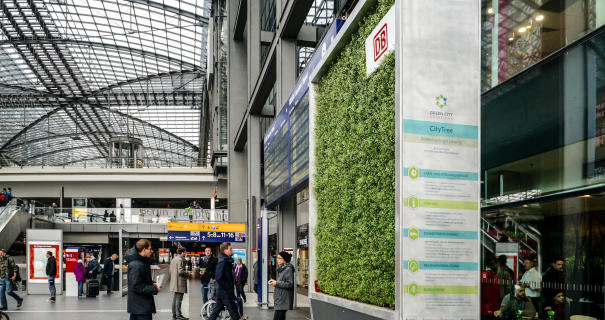Solution To Delhi’s Smog Problem: This Moss Wall ‘Eats’ As Much Polluted Air As A Small Forest
This self-watering and solar-powered innovation may just be what Indian cities need in their uphill battle against air pollution.

For the last few days, the dense smog enveloping New Delhi has halted traffic on highways, forced schools to shut down and sent worried residents scurrying to buy air purifiers and masks. With the deadly level of carcinogenic pollutants in this toxic haze being roughly 10 times the reading in Beijing (a city globally infamous for its polluted air), the situation in Delhi has been rightly called a major public health emergency by experts.
This is why tackling air pollution has become a matter of utmost urgency for India. According to the World Health Organization, poor air quality causes seven million premature deaths every year, making it the planet’s largest single environmental health risk.
It is to help mitigate these dangerous consequences that a Berlin-based company, Green City Solutions, has developed a unique way to combat urban air pollution — a mobile wall of moss that can clean as much polluted air as a small forest!

Called CityTree, this self-watering, self-monitoring and solar-powered piece of green technology mimics the action of 275 real trees to clean and cool air. However, it isn’t a tree at all – it’s a moss culture that efficiently binds particulate matter, nitrogen oxides, ozone and carbon dioxide while producing valuable oxygen.
“Moss cultures have a much larger leaf surface area than any other plant. That means we can capture more pollutants,” explained Zhengliang Wu, the co-founder of Green City Solutions, to Green Matters, when asked why moss was chosen for this invention.
You’ve probably met moss before: tiny tufts of leafy greens, stuck to tree trunks, rocks and possibly old building walls. Unlike plants with roots, moss can absorbs all its nutrient needs directly from air—an adaptation that allows it to “eat up” air pollutants that cling to its sticky surface.
According to the creators, each CityTree is able to absorb around 250 grams of particulate matter a day (nearly 90 kgs in a year) and removes about 240 metric tons of CO2 annually. The plant-based air filter also cools the surrounding air by water evaporation (up to 17 degrees Celsius within a five-metre radius) and is thus a space-saving way of combating urban heat islands.

Armed with Wi-Fi sensors to monitor the health of moss, a CityTree functions autonomously and requires very little maintenance: solar panels generate electricity (stored in batteries) to power the installation while rainwater (collected in a built-in reservoir) is used for fully automated watering. It is also great for biodiversity, on one square meter it provides home to nearly 1600 plants.
Furthermore, its simple frame takes up floor space of only 1.5 square meter square and has a profusion of shade-giving plants to help it harmonise with any urban environment. It can be assembled or dismantled within just a few hours and most of its parts are recyclable. It can even be customized to a degree with optional additions such as attached wooden bench and protections against vandalism.

Built to withstand deliberate damage, CityTree also has pollution sensors and integrated IoT (Internet of Things) technology to provide real time data on the local air quality and the comprehensive performance of the installation. Additionally, it can be equipped with advertising signs, LED screens and Wi-Fi routers, making the facade a modern portal of communication too.
Aware that getting the ambient air in contact with the moss wall is crucial for CityTree to be effective, the inventors ensure that the location of each installation is chosen carefully — spots where pollution is heavy due to traffic and where air flow is limited are picked. The importance of this step is illustrated by the fact that pollution from a car exhaust generally gets dispersed vertically a few kilometers into the air.
The fact that a CityTree is meant to add greenery to congested concrete-heavy spaces (where planting is not an option) is also a counter-point to the argument that a lot of real trees can be planted for much less money. It has the same air cleansing effect as 275 urban trees, but requires 99% less space to do so.

Currently, CityTrees can be found in 20 metropolitan areas around the world. For instance, a 100 meters long moss wall is being built in Stuttgart, Germany’s worst city for smog, to filter and degrade fine particulate matter. The moss species being used are Ceratodon purpureus and Racomitrium canescens.
With India being much in news for its deteriorating levels of air quality, Green City Solutions is hopeful about introducing CityTrees in the country’s highly polluted urban agglomerations. This effective eco-friendly innovation may just what Indian cities need in their uphill battle against pollution.
Like this story? Or have something to share? Write to us: [email protected], or connect with us on Facebook and Twitter.
NEW: Click here to get positive news on WhatsApp!
If you found our stories insightful, informative, or even just enjoyable, we invite you to consider making a voluntary payment to support the work we do at The Better India. Your contribution helps us continue producing quality content that educates, inspires, and drives positive change.
Choose one of the payment options below for your contribution-
By paying for the stories you value, you directly contribute to sustaining our efforts focused on making a difference in the world. Together, let’s ensure that impactful stories continue to be told and shared, enriching lives and communities alike.
Thank you for your support. Here are some frequently asked questions you might find helpful to know why you are contributing?


This story made me
-
97
-
121
-
89
-
167













